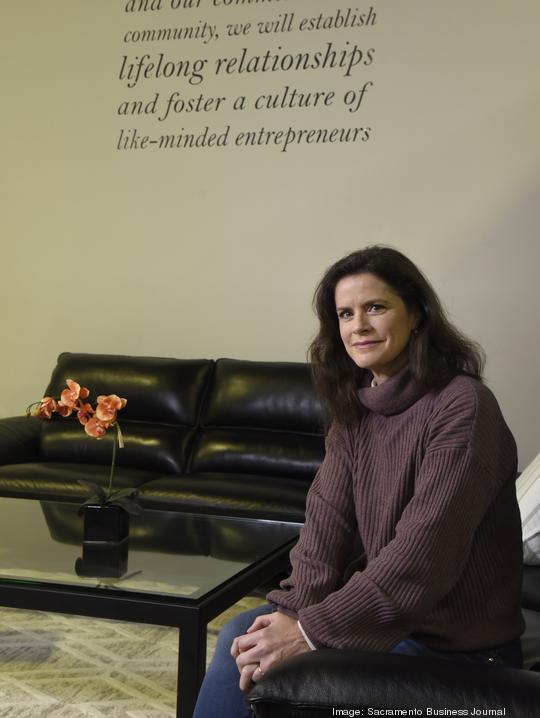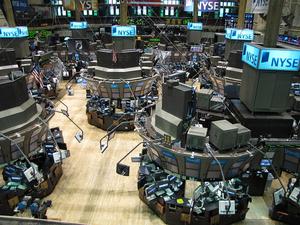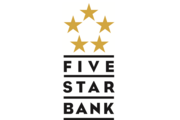What a difference a year makes in the market for new initial public offerings.
The first quarter last year saw the most new IPOs in years with a record level of proceeds, followed by the first quarter this year, which saw 85% fewer IPOs and proceeds plummet 95%.
There are all sorts of reasons for the rapid decline, but the big takeaway is that startups seeking funding and companies eyeing joining public markets have lost a lot of their value.
It also means that investors can negotiate deals better suited to their interests, and that means startups may find it harder to raise money.
Though far from Wall Street or Central Europe, even Sacramento startups now face downward pressure on valuations, because of volatility in public markets and rising interest rates, along with a litany of other pressures, from ongoing supply chain disruption and geopolitical instability from the war in Ukraine.
Last year, which was a record year for investments into startups and in companies going public, there was excess money chasing investments, said Sanjay Varshney, chief economist of the Sacramento Business Review, a professor of business at California State University Sacramento and founder of Goldenstone Wealth Management in El Dorado Hills.
Now a declining stock market hurts startup valuations and reduces investments into startups, he said.

“The public markets had three blockbuster years from 2019 through 2021,” he said.
Startups last year were commanding multiples that were unrealistic, but optimistic momentum kept pushing more money into the system, Varshney said. “Now you are going to see the reverse.”
Though now recovered slightly, the stock market in early March this year had given up nearly all of its gains from last year. The tech-heavy Nasdaq Stock Market has fared worse than the market overall.
“Absolutely, you are going to see valuations take a dramatic hit,” Varshney said. “It’s a trickle-down effect. As the public markets have less money, that flows all the way through the economy to private investors, venture capital and eventually to the startups seeking funding."
If market volatility continues for an extended period, Varshney said it will quickly and tightly squeeze startups.
“They are all looking for money from the same places, and there will be less money available as liquidity dries up,” he said.
For very early stage companies, the valuation hit is more academic than a reality at this point, said Monique Brown, managing director of the Growth Factory, a funded startup accelerator based in Rocklin launched by entrepreneur Mark Haney with local investors.

“Valuations are coming down, but we don’t see it at this level,” she said. “We still have really practical founders. I haven’t seen non-defensible valuations.”
Fears of rising interest rates hit the market starting at the fall of last year, as the Federal Reserve and others stopped calling Covid-19 and supply chain-caused inflation transitory, as it had said for two years. Fed Chair Jerome Powell told Congress in December that it was probably time to retire the term “transitory inflation,” and added that inflation will likely linger into this year. Powell also said he anticipated a series of interest rate hikes in 2022. That spooked markets.
Then the Russian invasion of Ukraine caused more unease, followed by drastically rising fuel prices globally.
“We have talked about geo-political risk for markets for years. Now we are seeing it play out,” Varshney said.
A jarring drop
The IPO market was hot last year, and it was a banner year for both the number of new public companies and also for their ability to raise money “at any valuation,” said Avery Spear, senior data analyst with investment banking firm Renaissance Capital LLC in Stamford, Connecticut.
“They were priced at perfection, and they were not perfect, so that translates now to less activity,” she said. “Especially when you compare it to last year, it is a huge drop. It is jarring.”
Some of the decline in IPOs is just cyclical, she said.
“After a year like last year, you would expect it to decrease,” Spear said, adding that poor returns of many of the IPOs after going public also affected the market.
Those poor returns, coupled with what has been happening in the world, have turned last year’s bullish sentiment around in its tracks.
“It’s now a very difficult environment for companies to go public,” she said.
The decline, Spear stressed, is cyclical and due to multiple circumstances, but the path to recovery is well charted once market volatility eases.
“We definitely went from a top to a bottom in nine months,” said Ben Harrison, president of financial services at Palo Alto-based Intapp Inc. (Nasdaq: INTS), whose DealCloud is an investment management platform for private investors. Harrison is based in New York.
“From July to March was a steady decline, and it has come to a screeching halt,” he said.
The reset has mostly been seen at the IPOs of unicorn technology companies, those worth more than $1 billion, where many of them are trading below their offering prices.
Because of that, the market has corrected itself, and that is why a lot of technology companies’ valuations have seen a reset.
“It’s not a correction,” Harrison said. It’s more of a “return to normal.”
That return to normal, however, has been jarring, including a value drop for new companies coming to market of 40%.
“No one wants to go out now (in an IPO) because the buyer needs to pay 40% less,” Harrison said.
Sacramento IPOs
Sacramento had two traditional IPOs last year: education software company PowerSchool Holdings Inc. and regional community bank Five Star Bancorp. PowerSchool’s (NYSE: PWSC) shares debuted at $18 and have traded between $12.35 and $36.56, spending most of this year below the offering price. Five Star (Nasdaq: FSBC) shares opened at $20 and have traded over that since its IPO.

Zero-carbon plastic company Origin Materials Inc. (Nasdaq: ORGN) went public through an acquisition by a special purpose acquisition company, or SPAC, which was priced at $10. The company’s shares have traded most of this year under $7 and as low $4.82.
In addition to slowing new IPOs, the drop in valuations has knock-on effects that reverberate to other public and private companies. As company share prices fall, it makes it harder for them to use their stock as currency in acquisitions.
If the hit on company valuations carries on for months or years, the market will respond, Harrison said. Private equity firms could seize the opportunity to take public companies private. And it could open the door for more private investment in public equity, or PIPE, deals, where private investment firms buy shares of public companies at below current market value.
Asked whether this appears to be a long-term hit to the market, like the 10-year recovery from the banking crisis in 2008, or a short-term hit, like the six-month hit to the market from the beginning of Covid-19, Harrison and Spear said it appears to be more short-term, without more major shocks to markets.









